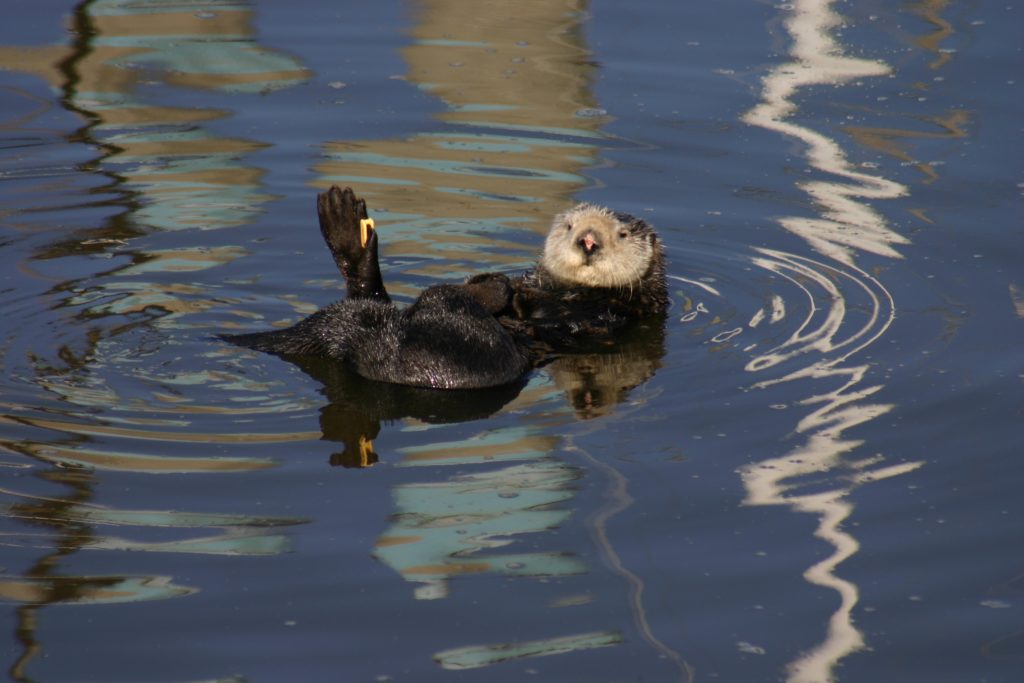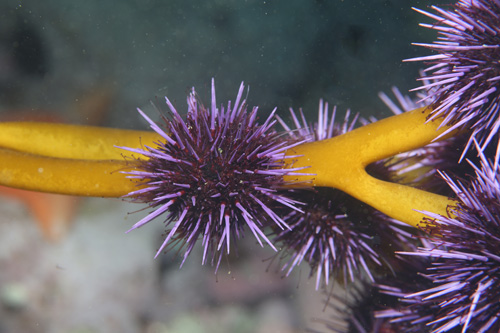Ecological communities are regulated by many mechanisms, including species interactions, demography, and environmental processes. These mechanisms alter the function, stability, and state of a community, and serve as a focal area of interest for many marine ecologists. Research published 8 March 2021 in the Proceedings of the National Academy of Sciences demonstrates how the behavioral response of southern sea otters to changes in purple urchin behavior and urchin body condition (i.e., caloric value) can alter the relationship between urchins and their food (i.e. kelp).

In 2015, when purple urchins densities in Monterey Bay increased and they emerged from cracks and crevices, many asked: “Why aren’t sea otters eating all the urchins?” It is well known that sea otters are voracious predators, consuming up to 25% of their body mass daily, and sea urchins are among their favorite prey.

This new study by PhD candidate Josh Smith and colleagues describes how sea otters focus on eating “healthy” purple urchins found within kelp forests, due to their high caloric value, while ignoring “starved” purple urchins in nearby deforested areas. This behavioral shift by sea otters—based on the body condition of purple urchins—creates a mosaic of nearshore communities that includes kelp-dominated, urchin-dominated, and transitional kelp forest communities.
Sea otters may maintain healthy “islands of kelp” by foraging on the healthy purple urchins, thereby reducing the urchin density within these islands, and preventing kelp from being overgrazed. By contrast, in those areas where most algae are overgrazed and either severely depleted or absent, the purple urchins are abundant but emaciated. These urchins are not consumed by sea otters, but can survive for months or even years on the edge of starvation.
While this research answers one question, other perplexing questions remain. Chief among them is: “What caused the high recruitment of purple urchins in 2011 and 2012, prior to the onset of the marine heatwaves, kelp decline, and sea star wasting syndrome?” Sadly, we may not be able to answer this, since monitoring purple urchin recruitment was only intermittent throughout the state and not continuous.
In addition, the pattern observed in Monterey Bay is not the same observed in other areas of California, or in Oregon and Washington. For example, the coastal kelp forests on the outer coast of Washington within the Olympic Coast National Marine Sanctuary also experience marine heatwaves and sea star wasting syndrome, but urchin populations did not increase in 2014 or 2015. At Tatoosh Island, on the tip of Washington, urchins began to increase in 2017, whereas other study sites remained unchanged.
To read a summary of this exciting new research, check out the article by UCSC News here.
For an article by the Good Times, read here.
To listen to a story on NPR, click here.